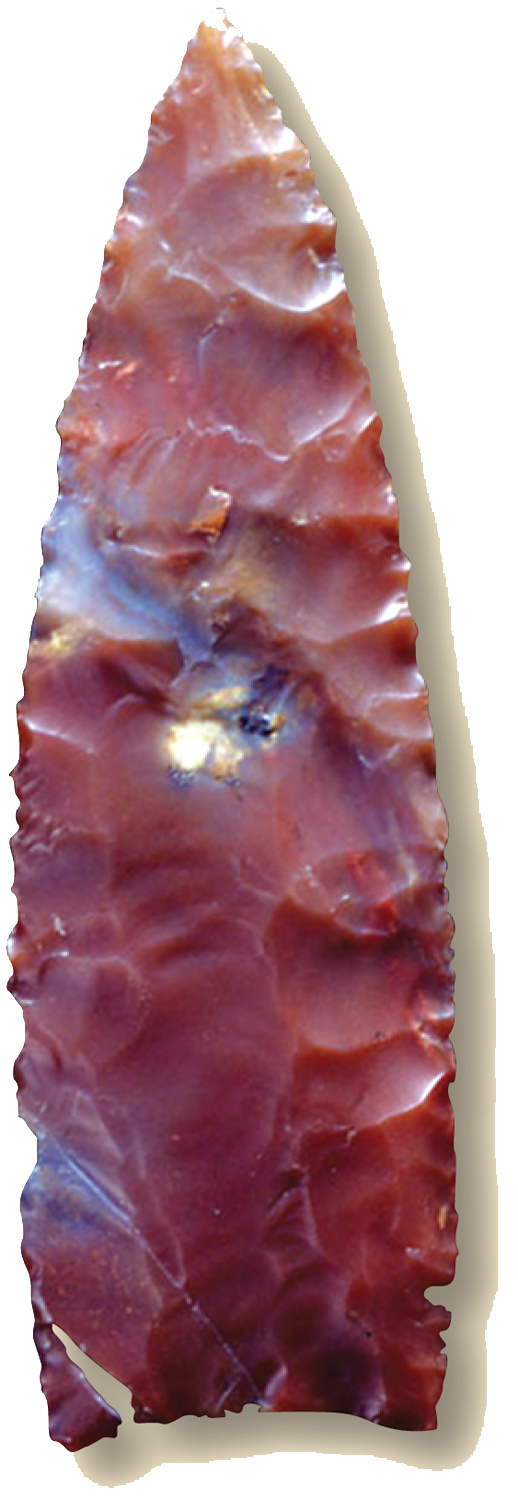The American Promise:
Printed Page 6
HISTORICAL QUESTION
Who Were the First Americans?

To learn who the first Americans were and when they arrived requires following a trail that has grown very cold during the past 15,000 or 20,000 years.
After millennia of erosion and environmental change, much of the land they walked, hunted, and camped on is now submerged and inaccessible beneath the Bering Sea and along the Atlantic and Pacific coasts, where rising sea levels have flooded wide, previously exposed coastal plains. Most of the numerous Paleo-
Scattered and controversial evidence suggests, however, that Clovis peoples were not the first arrivals. The Monte Verde excavation in Chile has persuaded many archaeologists that the first Americans resided in South America sometime between 14,750 BP and 14,000 BP. This site and a few other likely pre-
Some experts hypothesize that pre-
Ancient Siberians had the means (hunting skills and adaptation to the frigid climate), motive (pursuit of game animals), and opportunity (the Beringian land bridge) to become the first humans to arrive in America, and most archaeologists believe they did just that. But when they came is difficult to determine since the Beringian land bridge existed for thousands of years. The extreme rarity of the earliest archaeological sites in North America also makes it difficult to estimate with confidence when pre-
To investigate where the mysterious first Americans came from, experts have supplemented archaeological evidence with careful study of modern-
Detailed scientific analyses of the teeth of thousands of ancient and modern Native Americans have identified distinctive dental shapes—
Linguistic analysis of more than a thousand modern Native American languages demonstrates that Native Americans throughout the hemisphere speak some form of Amerind, the consequence (presumably) of its arrival with the earliest wave of ancient migrants around 13,000 BP. This migration chronology and linguistic analysis remain controversial among experts, but they suggest that Clovis peoples spoke some ancient form of Amerind.
Genetic research into the mutation rate of DNA reveals that many modern Native Americans share genetic characteristics commonly found among Asians. Estimates of the evolutionary time required to produce the subtle differences between Asian and Native American DNA suggest a migration from Asia as early as 25,000 BP or before. But like the other high-
Fascinating as the genetic, linguistic, and dental studies are, they are unlikely to win widespread support among experts until they can be corroborated by archaeological evidence that, so far, has not been found. Until then, specialists will continue to debate when the first Americans arrived and how they were related to subsequent generations of ancient Americans.
Thinking about Evidence
- What evidence supports the hypothesis that the first Americans came from Asia? Do you find the evidence persuasive?
- If pre-
Clovis peoples were the first Americans, what evidence suggests when they arrived and what happened to them? - Can you imagine archaeological evidence that, if found, would conclusively identify the first Americans and when they arrived?
Connect to the Big Idea
In what ways were the first Americans related to their ancestors elsewhere in the world?